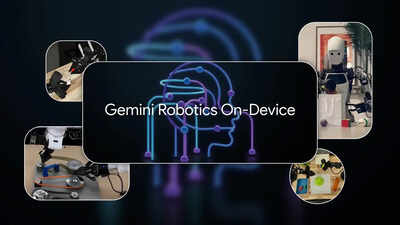ARTICLE AD BOX

Google has launched a new
Gemini
model, which is specifically designed to run on robots without requiring internet connectivity. The tech giant describes the "Gemini Robotics On-Device" model as an efficient,
on-device robotics model
offering “general-purpose dexterity” and faster task adaptation. This new version builds on the
Gemini Robotics
VLA (vision language action) model, which was introduced in March and brought Gemini 2.0’s multimodal reasoning and real-world understanding to physical applications. By operating independently of a data network, the on-device model will support latency-sensitive applications and ensure stronger environments with unreliable or no connectivity.Google is also providing a Gemini Robotics SDK to assist developers. This SDK will allow them to evaluate Gemini Robotics On-Device for their specific tasks and environments, test the model within Google's MuJoCo physics simulator, and adapt it to new domains with a limited number of demonstrations (as few as 50 to 100). Developers can gain access to the SDK by signing up for Google's trusted tester program.
Google’s new Gemini model for robots: Capabilities and performance
Google claims that Gemini Robotics On-Device is a lightweight robotics foundation model designed for bi-arm robots that enables advanced dexterous manipulation with minimal computational overhead.
Built on the capabilities of Gemini Robotics, it supports rapid experimentation, fine-tuning for new tasks, and local low-latency inference. The company also promises that the model demonstrates strong generalisation across visual, semantic, and behavioural tasks, effectively following natural language instructions and completing complex actions like unzipping bags or folding clothes, all while operating directly on the robot.In tests, Gemini Robotics On-Device outperforms other on-device models, especially in challenging, out-of-distribution and multi-step scenarios. It can be fine-tuned with just 50–100 demonstrations, making it highly adaptable to new applications. Originally trained on ALOHA robots, the model was successfully adapted to the bi-arm Franka FR3 and Apollo humanoid robot, completing tasks like folding dresses and belt assembly. This marks the first availability of a VLA model for on-device fine-tuning, offering powerful robotics capabilities without cloud dependency.
Redmi Pad 2: Know these Things Before Buying!



.png)
.png)
.png)
















 4 hours ago
5
4 hours ago
5








 English (US) ·
English (US) ·